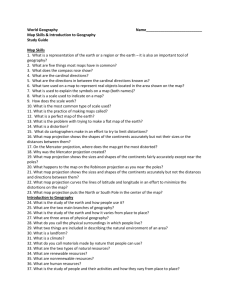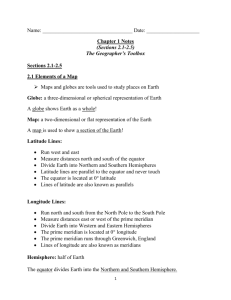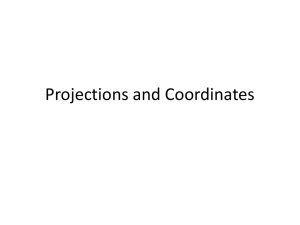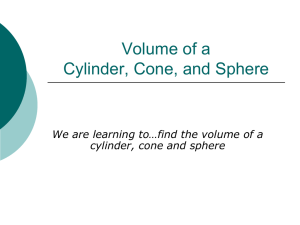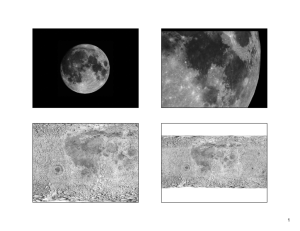Modeling Algebraic Expressions * Lifting Weights
advertisement
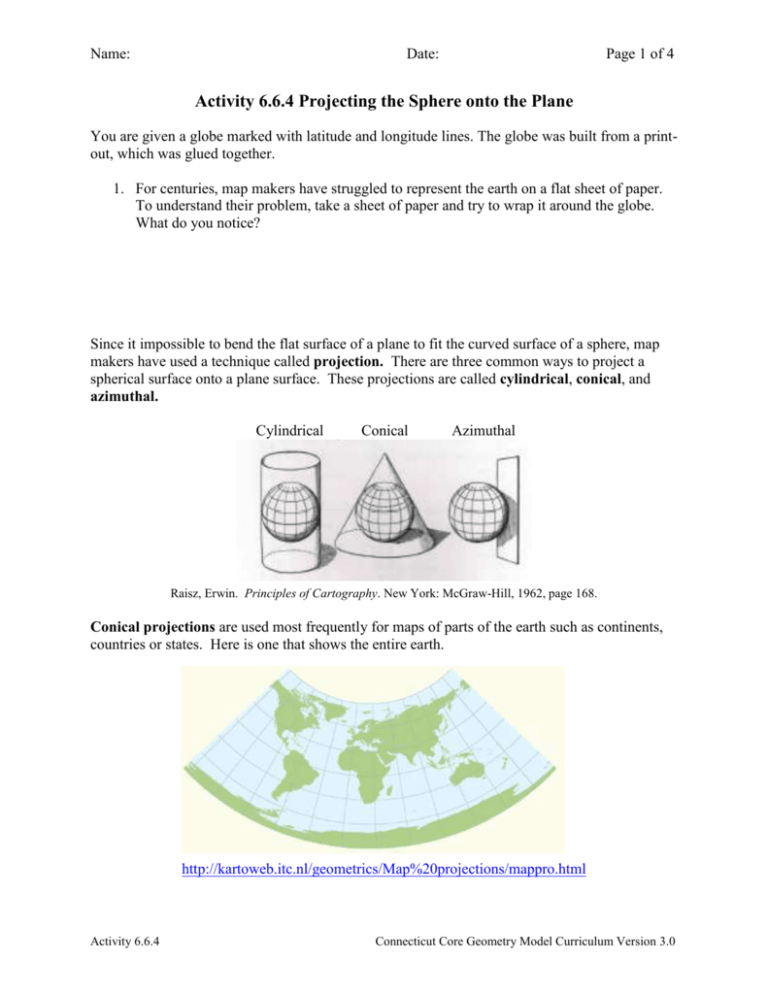
Name: Date: Page 1 of 4 Activity 6.6.4 Projecting the Sphere onto the Plane You are given a globe marked with latitude and longitude lines. The globe was built from a printout, which was glued together. 1. For centuries, map makers have struggled to represent the earth on a flat sheet of paper. To understand their problem, take a sheet of paper and try to wrap it around the globe. What do you notice? Since it impossible to bend the flat surface of a plane to fit the curved surface of a sphere, map makers have used a technique called projection. There are three common ways to project a spherical surface onto a plane surface. These projections are called cylindrical, conical, and azimuthal. Cylindrical Conical Azimuthal Raisz, Erwin. Principles of Cartography. New York: McGraw-Hill, 1962, page 168. Conical projections are used most frequently for maps of parts of the earth such as continents, countries or states. Here is one that shows the entire earth. http://kartoweb.itc.nl/geometrics/Map%20projections/mappro.html Activity 6.6.4 Connecticut Core Geometry Model Curriculum Version 3.0 Name: Date: Page 2 of 4 Azimuthal projections are centered on a single point, often one of the poles. The United Nations flag has an example of an azimuthal projection based on the North Pole. http://en.wikipedia.org/wiki/Flag_of_the_United_Nations In this activity we will focus on cylindrical projections. 2. Image a cylinder wrapped around the sphere. This diagram shows a cross section, with the sphere represented as a circle and the cylinder as two parallel lines. Points on the cylinder are projected from the center of the sphere. Points with latitudes 0°, 15°N, and 30°N are shown on the line on the left. Use a protractor to locate points with latitudes 45°N, 60°N, 75°N, 15°S, 30°S, 45°S, 60°S, and 75°S. Activity 6.6.4 Connecticut Core Geometry Model Curriculum Version 3.0 Name: Date: Page 3 of 4 3. On your globe look at the distances along a meridian between two parallels of latitude that are 15° apart. What do you notice? 4. What happens to distances that are 15° apart on the cylinder as you move farther away from the equator? 5. What happens to the North Pole (latitude 90°N) and the South Pole (latitude 90° S) with this type of projection? A cylindrical projection from the center of the sphere is similar (but not identical to) the well known Mercator Projection shown on the map below http://www.progonos.com/furuti/MapProj/Normal/ProjNav/projNav.html#Mercator 6. Compare the size of Greenland and Australia, both on the globe and on the Mercator projection map. What do you notice? 7. Locate the continent Antarctica on the globe and on the Mercator map. What do you notice? Where is the South Pole on the Mercator map? Activity 6.6.4 Connecticut Core Geometry Model Curriculum Version 3.0 Name: Date: Page 4 of 4 The Mercator cylindrical map projection is good at preserving the angles and was used by navigators to find their way at sea, but it distorts the size of objects especially near the poles. An alternative way to project the sphere onto the cylinder is to draw lines straight across from the axis through the poles onto the surface of the cylinder. 8. The diagram above shows the cross section of another cylinder wrapped around a sphere. Points on the sphere have been projected horizontally onto the line on the left. Projections for 0°, 15°N, and 30°N are shown. Draw parallel lines locate points with latitudes 45°N, 60°N, 75°N, 90°N, 15°S, 30°S, 45°S, 60°S, 75°S, and 90° S. 9. What happens to distances that are 15° apart on the cylinder as you move farther away from the equator? 10. What happens to the North Pole (latitude 90°N) and the South Pole (latitude 90° S) with this type of projection? 11. The Gall-Peters projection, shown at the bottom of the page, is based on the method shown above. In the 1970’s Arno Peters argued that this map is better than the Mercator projection since there is no distortion of area. Look at the Mercator map on page 3 and the Gall-Peters map. Compare the relative sizes of Canada and the continent of Africa on the two maps. What do you notice? 12. The Gall-Peters projection preserves areas but it its distorted in other ways. Comparing this map with the globe, what do you see that looks wrong? http://www.progonos.com/furuti/MapProj/Normal/ProjCyl/ProjCEA/projCEA.html Activity 6.6.4 Connecticut Core Geometry Model Curriculum Version 3.0

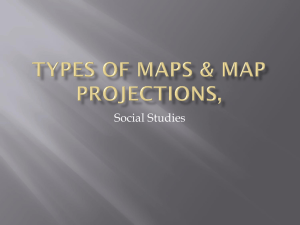
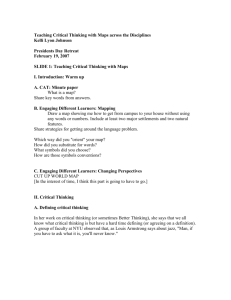
![Volume of Pyramids, Cones, and Spheres [12/4/2013]](http://s2.studylib.net/store/data/005724855_1-4c0eaf218975fc4d9fe792c18193e4dc-300x300.png)

